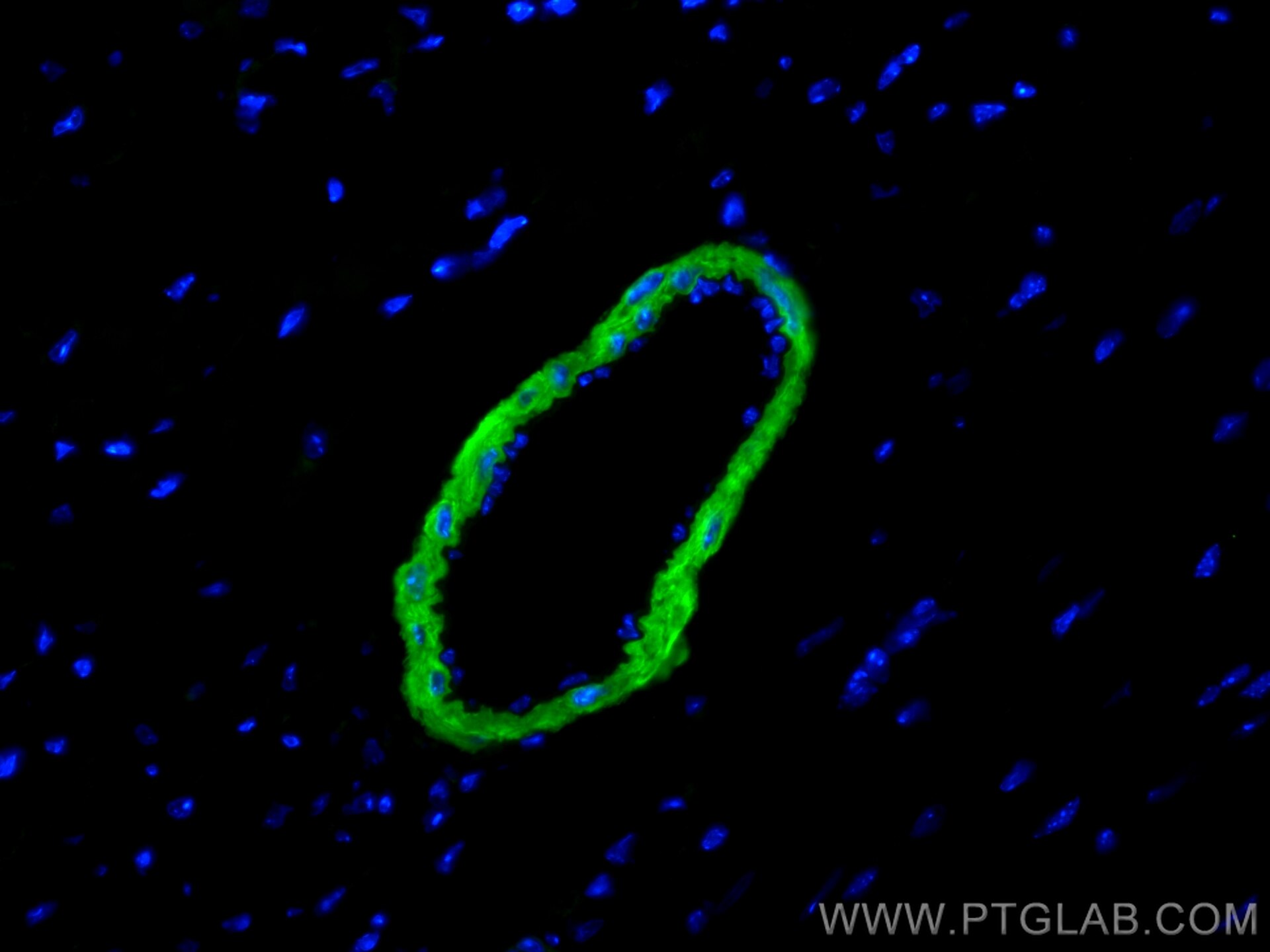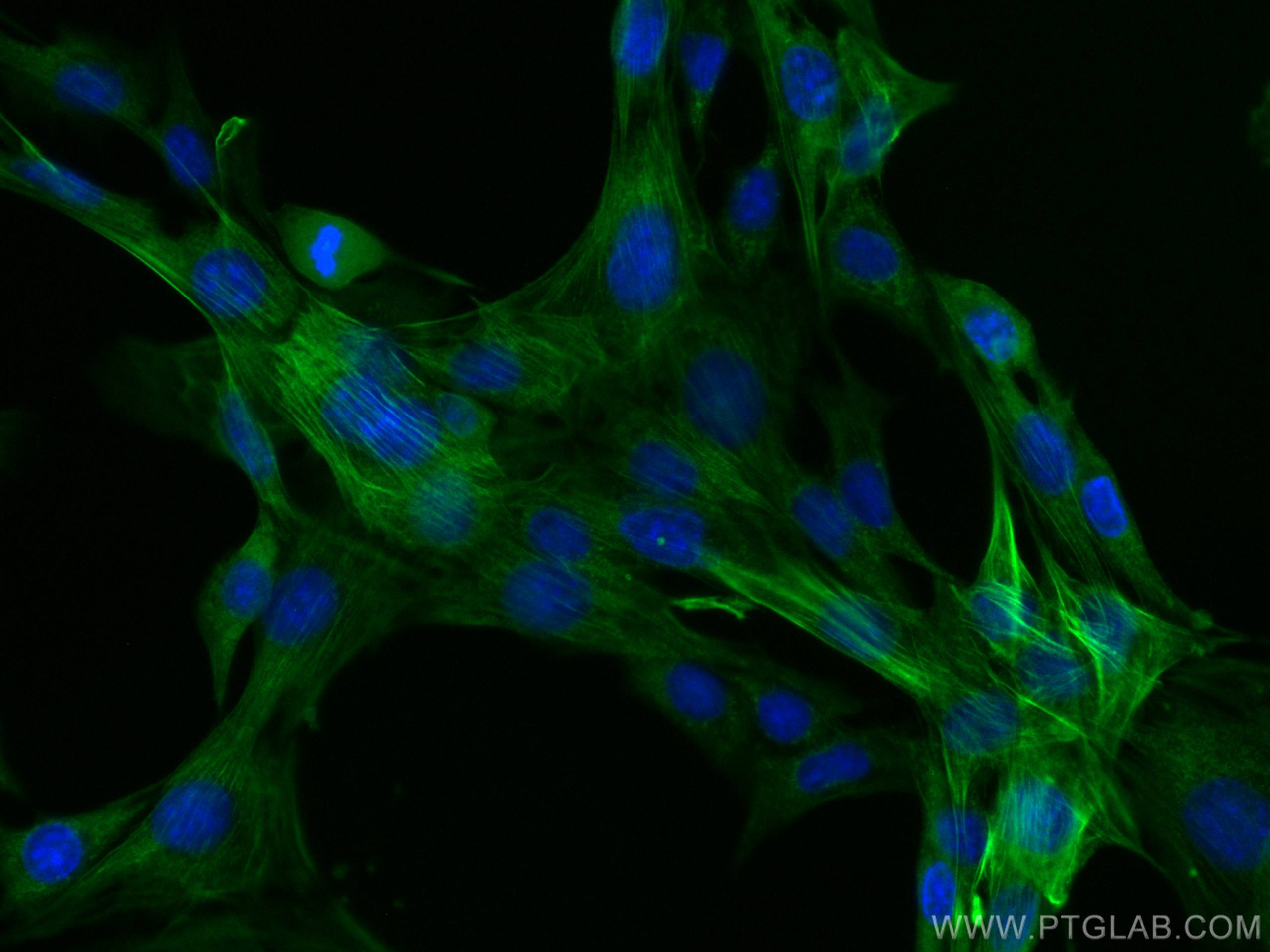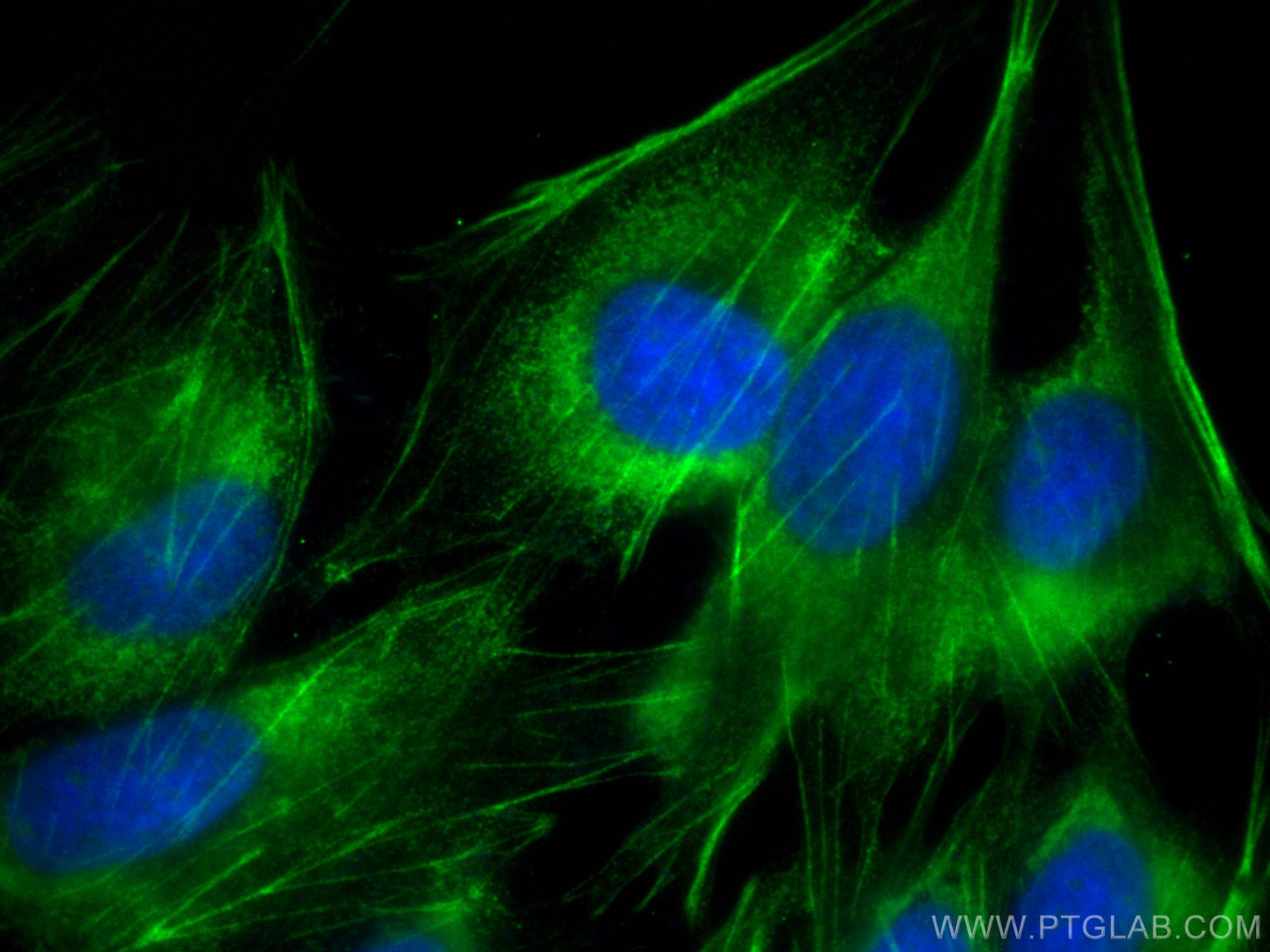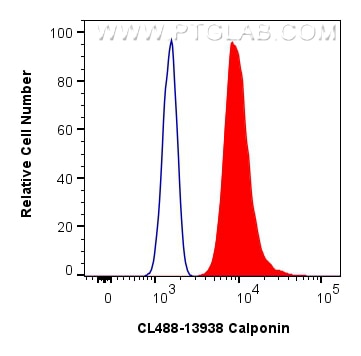Tested Applications
| Positive IF-P detected in | mouse heart tissue |
| Positive IF/ICC detected in | C2C12 cells, MDCK cells |
| Positive FC (Intra) detected in | C2C12 cells |
Recommended dilution
| Application | Dilution |
|---|---|
| Immunofluorescence (IF)-P | IF-P : 1:50-1:500 |
| Immunofluorescence (IF)/ICC | IF/ICC : 1:50-1:500 |
| Flow Cytometry (FC) (INTRA) | FC (INTRA) : 0.4 ug per 10^6 cells in a 100 µl suspension |
| It is recommended that this reagent should be titrated in each testing system to obtain optimal results. | |
| Sample-dependent, Check data in validation data gallery. | |
Product Information
CL488-13938 targets Calponin in IF/ICC, IF-P, FC (Intra) applications and shows reactivity with human, mouse, rat, canine samples.
| Tested Reactivity | human, mouse, rat, canine |
| Host / Isotype | Rabbit / IgG |
| Class | Polyclonal |
| Type | Antibody |
| Immunogen |
CatNo: Ag4989 Product name: Recombinant human Calponin protein Source: e coli.-derived, PGEX-4T Tag: GST Domain: 1-297 aa of BC022015 Sequence: MSSAHFNRGPAYGLSAEVKNKLAQKYDHQREQELREWIEGVTGRRIGNNFMDGLKDGIILCEFINKLQPGSVKKINESTQNWHQLENIGNFIKAITKYGVKPHDIFEANDLFENTNHTQVQSTLLALASMAKTKGNKVNVGVKYAEKQERKFEPGKLREGRNIIGLQMGTNKFASQQGMTAYGTRRHLYDPKLGTDQPLDQATISLQMGTNKGASQAGMTAPGTKRQIFEPGLGMEHCDTLNVSLQMGSNKGASQRGMTVYGLPRQVYDPKYCLTPEYPELGEPAHNHHAHNYYNSA Predict reactive species |
| Full Name | calponin 1, basic, smooth muscle |
| Calculated Molecular Weight | 33 kDa |
| Observed Molecular Weight | 35 kDa |
| GenBank Accession Number | BC022015 |
| Gene Symbol | Calponin |
| Gene ID (NCBI) | 1264 |
| RRID | AB_2919081 |
| Conjugate | CoraLite® Plus 488 Fluorescent Dye |
| Excitation/Emission Maxima Wavelengths | 493 nm / 522 nm |
| Form | Liquid |
| Purification Method | Antigen affinity purification |
| UNIPROT ID | P51911 |
| Storage Buffer | PBS with 50% glycerol, 0.05% Proclin300, 0.5% BSA, pH 7.3. |
| Storage Conditions | Store at -20°C. Avoid exposure to light. Stable for one year after shipment. Aliquoting is unnecessary for -20oC storage. |
Background Information
Calponin is a family of actin filament-associated proteins which regulate smooth muscle cell contraction. Three isoforms of calponin exist: calponin h1 (CNN1) , calponin h2 (CNN2) and calponin 3 (CNN3). CNN1 is a basic 34-kD protein specifically expressed in smooth muscle and a marker of smooth muscle cell differentiation. This antibody raised against the full-length of human CNN1 may cross-react with CNN2 and CNN3.
Protocols
| Product Specific Protocols | |
|---|---|
| FC protocol for CL Plus 488 Calponin antibody CL488-13938 | Download protocol |
| IF protocol for CL Plus 488 Calponin antibody CL488-13938 | Download protocol |
| Standard Protocols | |
|---|---|
| Click here to view our Standard Protocols |










